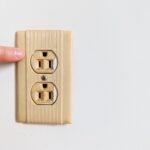Electric space heaters are a fantastic solution for keeping warm during colder months, but what happens when they suddenly stop working or, worse, become a safety hazard? Understanding the mechanics behind these convenient devices can save you from discomfort and potential danger. By focusing on the safety switches and heating elements, two critical components of your space heater, you can ensure optimal performance and safety.
- Test Safety Switches: Discover how to assess and troubleshoot safety switches, preventing unsafe heater operation.
- Identify Common Faults: Gain insights into frequent safety switch issues like faulty connections and how to fix them.
- Inspect Heating Elements: Learn the steps to test and replace malfunctioning heating elements for reliable heating.
By delving into these vital aspects of electric space heaters, you’ll be equipped with practical maintenance skills that ensure your heater remains a dependable source of warmth. This article will guide you through troubleshooting steps and replacement processes, fostering not just knowledge, but peace of mind as well.
Understanding Electric Space Heater Problems: Safety Switch Test
Electric space heaters are a popular choice for providing supplemental heat, especially during cold months. However, the proper functioning of safety switches is crucial to prevent potential hazards. Safety switches are designed to automatically shut off the heater if it is tipped over or overheating, thereby ensuring user safety.
If your electric space heater is not operating correctly, one of the first components to check is the safety switch. Testing safety switches regularly can help identify issues before they develop into serious problems. Begin by ensuring the heater is unplugged and cool. Locate the safety switch, which is typically found at the base of the unit.
To test the safety switch, gently simulate a tip-over situation by tilting the heater. A working switch will cause the heater to turn off, confirming it is functioning as intended. If there’s no response, the switch may be faulty and require further inspection or replacement. Regular maintenance of electric space heaters, especially checking safety switches, promotes efficient and safe operation, making these heaters a continued reliable source of warmth.
Common Faults with Safety Switches
Safety switches in electric space heaters can sometimes develop faults that impair their effectiveness. One frequent issue is faulty connections, which might be caused by wear and tear over time. Loose wiring or corroded contact points can prevent the switch from functioning correctly, posing potential safety risks.
Another common problem is worn-out components within the safety switch itself. Over time, the mechanical parts that operate the switch can degrade, leading to malfunction. In some cases, foreign objects or debris might obstruct the switch’s operation, preventing it from triggering as it should.
Addressing these issues early is important to maintain your heater’s performance. If you identify faulty connections, carefully inspect the wiring and contact points. Tighten any loose connections and clean away corrosion gently. For worn-out components, consider replacing the switch to ensure reliable operation. Keeping your electric space heater’s safety switch in good condition can prevent interruptions and enhance overall safety.
Examining Electric Space Heater Problems: Element Testing and Replacement
Heating elements are the heart of your electric space heater, responsible for converting electrical energy into heat. Over time, these elements can degrade or fail, leading to insufficient heating or no heat at all. Ensuring these elements function correctly is essential for maintaining effective heating and maximizing energy efficiency.
To start, turn off the heater and unplug it from the electrical outlet. Safety is paramount, so please ensure the device is completely cool before commencing any inspections. Once safe, access the heating element by removing the necessary panels, paying close attention to any specific manufacturer guidelines for your model.
Begin by visually inspecting the element for signs of damage, such as burn marks, breaks, or corrosion. These are clear indicators that the element might need replacement. Next, use a multimeter to test for continuity. Set the multimeter to the resistance setting, and place the probes across the terminals of the heating element. A reading of zero or infinite resistance suggests that the element is faulty. A functioning element should show a consistent non-zero resistance.
If issues are identified, replacing the heating element is the logical next step. First, source a replacement part that matches your heater’s specifications. Reference your heater’s manual or consult the manufacturer to ensure compatibility. Installation usually involves disconnecting the old element’s connections and securing the new one in place.
Properly reassemble the heater, ensuring all components are securely fastened. Once completed, plug the heater back in and test its functionality. With a new or confirmed working heating element, your electric space heater should provide reliable and efficient warmth, contributing to a comfortable environment.
Frequently Asked Questions About Electric Space Heaters
How often should I test the safety switch on my space heater?
It’s recommended to test the safety switch every season before regular use to ensure it functions properly.
What are signs of a faulty safety switch?
A sign of a faulty switch can include the heater not turning on or shutting off unexpectedly. Regular inspection is advised.
How can I test a heating element for faults?
To test a heating element, use a multimeter to check continuity. If the circuit isn’t complete, the element may need replacing.
When should I replace the heating element in my space heater?
Replace the element if it’s not producing heat despite the heater being on, or if a multimeter shows faulty readings.
Can I replace safety switches and heating elements myself?
If comfortable with DIY repairs, but always ensure the unit is unplugged. If unsure, consult a professional.





